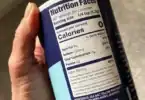What is Salt Anyway?
At ForgedBySalt.com we are pretty interested in all kinds of salt, but what is salt anyway? The first thing that comes to mind for most people when you say the word ‘salt’ is table salt or common salt that we have in a salt shaker on the dinner table or next to the stove. But there are so many different kinds of salt, and so many useful salts that go beyond culinary uses.
What the Chemistry Teacher Said
I managed to get through a lot chemistry classes, but I can’t say that I was very excited about it. I do vaguely remember some of this stuff about ‘what is salt’ – I’ll keep it short and link the much more knowledgeable Wiki type of sources if you want to read more:
A salt consists of the positive ion of a base and the negative ion of an acid. The reaction between a base and an acid is called a ‘neutralization reaction’.
The term salt is also used to refer specifically to common table salt, or sodium chloride, where sodium (Na+) is the base and chloride (Cl-) is the acid. Table salt is a fairly pure form of NaCl. Sometimes chemistry folks also refer to salts as ‘ionic compounds’. Want to know more? See Sodium Chloride.
So obviously, on this website we mostly discuss different types and forms of the common salt mineral – from a chemistry perspective: NaCl.

Where Do We Get Salt?
A great deal of the salt that we eat, that we use in a water softener or pool, or that is used for industrial uses or medicine originally was in an ocean somewhere. Humans started collecting salt from natural places where sea water collected and then evaporated, leaving the salt behind. Some of these deposits were formed a VERY long time ago. Two examples you may know of are the Great Salt Lake in Utah (the remnants of an inland sea) and the Salt Mines in Pakistan where there are huge deposits of pink Himalayan Salt.
Producing Salt
There are three basic ways that most common salt products are produced.
Solar Salt
This is probably the oldest and most original of all salt production. Areas of sea salt is trapped in shallow areas or ponds, and then the sun and wind helps to evaporate the water. At first humans just found areas where this worked out, but now most solar salt comes from warm areas near the ocean where evaporation ponds are built to harvest the salt. See the image featured with this post for an example in France.
Salt Mines
There are huge deposits around the globe of salt mines that were formed by ancient seas drying up over geological time spans. Humans located these and mined the solidified salt. One of our favorites for culinary purposes is Pink Himalayan Salt – click that link for more information about the other minerals found with that salt, as an example. Wondering where the largest salt mine on the globe is? Find the answer in History of Salt: The Highlight Reel.
Brine or Vacuum Evaporation
In this production method, instead of directly mining a salt deposit, water is pumped into a salt mine, some of the salt dissolves into the water, then the water is pumped back out of the mine and is evaporated. This is a good way to go when the salt deposits are hundreds of feet below the ground. Usually the deposits are found through drilling for petroleum deposits and salt is found in the drilling cores.
Other Salts You May Have Heard Of
There are other common compounds that are usually referred to as “Salts” with a ‘s’ to distinguish them from salt (sodium chloride). All of these follow that chemistry combination of the positive base ions matching the negative acid ions to form a balanced ionic compound, hence a ‘salt’. Here are a few examples:
Magnesium Chloride
Magnesium chloride is an inorganic compound (MgCl). It tends to form hydrates with water. These salts are colorless or white solids that are highly soluble in water. ‘MagChloride’ has a wide range of used from crop dust control, deicing highways, garden applications, use in food preparation (like tofu), pharmaceutical products and wastewater processing.
For more about deicing your sidewalks and driveways with magnesium chloride or other salts described here, be sure to read our article Best DeIcer – Which Salt to Choose for the Job.
Calcium Chloride
Calcium chloride is an inorganic compound (CaCl2). It is a white crystalline solid at room temperature, and it is highly soluble in water. Calcium chloride is used to prevent ice formation and is used as a deicer. This salt is not intended for human consumption.

In fact, use in de-icing products is one of the main thing that Calcium chloride is used for because it is relatively harmless to plants and soil and is much more effective at lower temperatures than common rock salt for melting ice.
Epsom Salt
Epsom salt is a white, crystalline compound of magnesium sulfate. It is a naturally occurring mineral salt that was originally identified in Epsom, England, where it occurred naturally, so it was named after the town. Epsom salt contains magnesium, sulfur, oxygen, and hydrogen. It is commonly used in baths, foot soaks, gardening and as a laxative. So obviously it is safe to ingest in small quantities, but you may not want to ;)
For details on what you might want to use Epsom Salt for, other than soaking your feet, check out these links:
- Epsom Salt for Tree Care: Promoting Stronger and Healthier Trees
- Epsom Salt For Tomatoes: Maximum Yields With This Natural Supplement
- There is a really informative article What is Epsom Salt about copious uses for Epsom salt.
If you are looking for more ideas about soothing ways to use Epsom salt in your bath be sure to see Unwind and De-Stress: 9 Epsom Salt Bath Ideas. This article contains the definitive method of determining how much Epsom salt is the right amount for your tub.
Baking Soda
Sodium Bicarbonate, is a type of salt that most of us just call Baking soda. It is a salt composed of sodium (Na+) and bicarbonate (HCO3-). In the kitchen, it is used in baking for its ability to leaven or ‘raise’ baked goods. It can absorb odors, so lots of people keep a box or bowl of it in their refrigerator. It also is often used in DIY home cleaning products or even for relief of mild indigestion. It is obviously safe to ingest in small quantities and has a bit of a salty taste.

Washing Soda
Washing soda is sodium carbonate, and also gets called Soda Ash because it can be made from the ashes of burned plants. It is an ingredient in many laundry detergents and also is available for you to add to your wash or for DIY home cleaning projects. It also is commonly used in fire extinguishers.
Potassium Iodide
This simple white crystalline salt is most often used to add the nutrient Iodine to iodized salt. It is made up of one potassium ion (K) and one Iodine ion (I). It is highly soluble in water. It also is commonly used in treatment of Thyroid disorders.
Plaster of Paris
Plaster of Paris doesn’t exactly spring to mind in a ‘what is salt’ list, but it fulfills the chemistry requirements in it’s composition: calcium sulfate hemihydrate. It is used for crafts such as making statues or molds and it used to be used for setting broken bones although that use seems to be going away as medical companies come up with fancier products.
Hydrated Salts
There is a category of Salts that naturally combine with water molecules that are called Hydrated Salts. If you are interested in knowing more about them, as well as terms like anhydrous salt and water of hydrations, please see this article: Hydrated Salt: Definition, Properties, And Uses.
Not All Natural Salts are Friendly Household Helpers
Copper sulfate is a salt that combines sulfur with copper. It can kill bacteria, algae, roots, plants, snails, and fungi. Copper sulfate can get rather toxic, depending on the copper content. When the copper levels concentrate, it has been known to kill fish and other stream wildlife. Copper sulfate can be found in the environment, foods, and water, in part because it has been registered for use in pesticide products in the United States since 1956. Definitely not something you want to mess with.
Final Thoughts
What is salt for you and your life? Please explore this website to learn how salt and salts can benefit your life and health! If your primary interest in salt is from a culinary point of view, this article may be for you: Worth It’s Salt: 20 Different Types of Salt. Confused about the difference between seasonings, salt, spices and herbs? You might be looking for this article: Is Salt A Spice: Putting A Label On Salt. If you are exploring how salt is used in industrial capacities, perhaps an article like Molten Salt: The Future Of Energy Storage is a good starting point.
Table of Contents
Featured photo (salt production in France) by Sébastien Goldberg. Baking soda image by Rachel Loughman.





